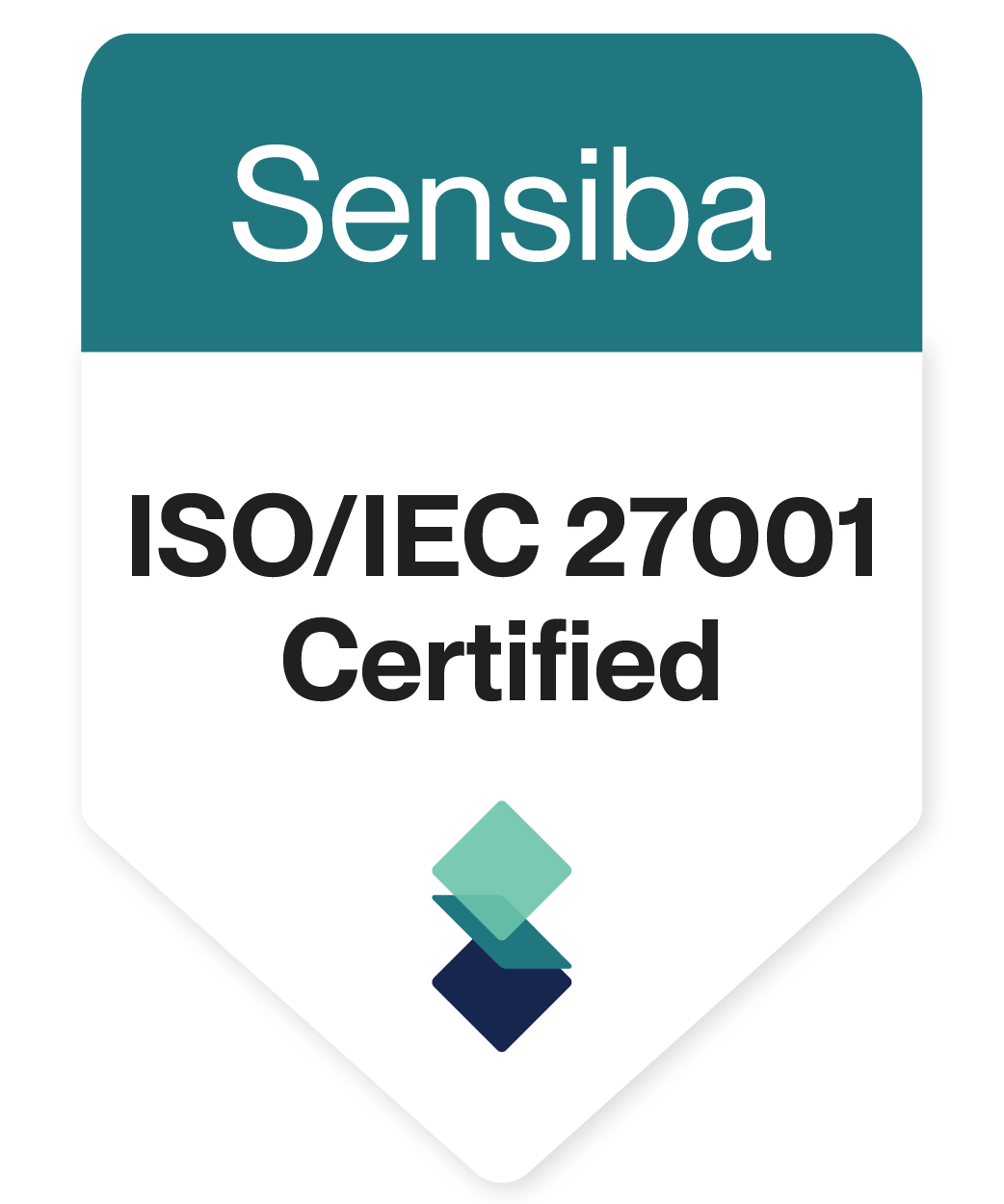Most people think of the Enneagram as a self-discovery tool—something you explore in a book, take a test for, and maybe discuss over coffee with a friend. But in the workplace, personality insights mean nothing if they don’t help people work better together.
Leaders often invest in personality assessments, hoping they’ll lead to stronger teams, better communication, and more engaged employees. But too often, these insights get buried in a PDF report and never see the light of day.
That’s the real challenge: knowing your type is a great start, but to actually improve collaboration and leadership, teams need a way to take Enneagram insights off the page and apply them in daily interactions.
Ways To Use The Enneagram In The Workplace
Unlike other personality tools, the Enneagram doesn’t just tell you how people behave—it uncovers why they do it. This makes it especially powerful for:
- Teamwork → Understanding what motivates colleagues and how they respond under stress.
- Communication → Learning how to tailor feedback and collaboration styles.
- Leadership → Helping managers lead with awareness, adapting to different work styles.
But knowing someone’s type doesn’t magically fix team dynamics. That’s where most teams get stuck—they have the knowledge but no clear way to act on it.
Unlike other personality tools, the Enneagram doesn’t just tell you how people behave—it uncovers why they do it. This makes it especially powerful for:
- Teamwork → Understanding what motivates colleagues and how they respond under stress.
- Communication → Learning how to tailor feedback and collaboration styles.
- Leadership → Helping managers lead with awareness, adapting to different work styles.
But knowing someone’s type doesn’t magically fix team dynamics. That’s where most teams get stuck—they have the knowledge but no clear way to act on it.
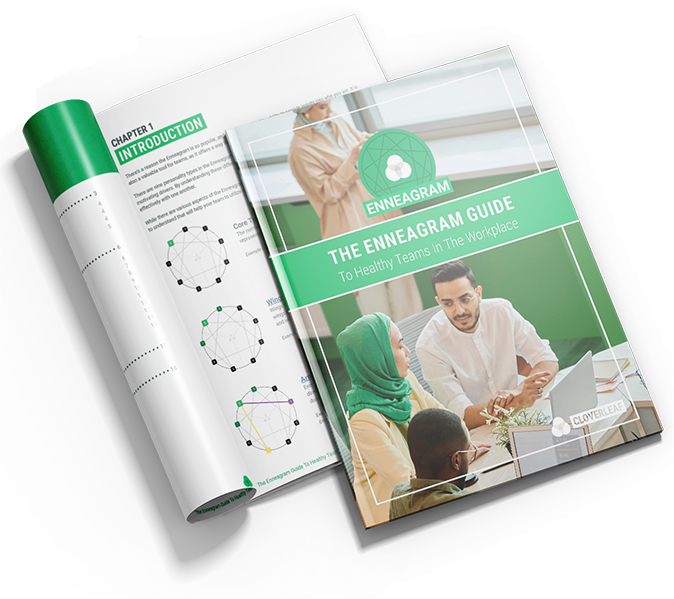
The Enneagram Guide To Healthy Teams
See How High-Performing Teams Use the Enneagram to Strengthen Collaboration
The Enneagram reveals more than what you see on the surface level. Although you may think you know and understand someone by the personality traits and patterns they display, without knowing their internal motivations, you can’t truly support or lead them as a teammate or leader.
When you discuss Enneagram types at work, you open up the possibility for empathy, compassion, and understanding. A team that works well together performs better, communicates better, and enjoys more purpose-filled work.
However, starting this conversation may be more challenging than it seems. Many people struggle to open up and be vulnerable in professional settings.
While you can’t force anyone to participate, the long-term reward of a cohesive team far outweighs the short-term inconvenience of being vulnerable.
How To Help Teammates Use The Enneagram To Work Together More Effectively
The Enneagram is most powerful when it moves beyond a framework for understanding and becomes a tool for how teams actually operate.
The Enneagram is a fun personality discussion, but it’s also a powerful tool for anticipating what each person needs to thrive at work. When teams actively use Enneagram insights in meetings, decision-making, and feedback conversations, they don’t just understand each other better—they collaborate with more empathy, communicate with more clarity, and work together more effectively.
Imagine if:
- A Type 3 manager knew their Type 9 team member needed more time to process decisions instead of rushing to move forward.
- A Type 6 employee could recognize their tendency to second-guess and build trust in their instincts.
- A Type 2 leader learned to set boundaries so they didn’t burn out trying to support everyone else.
When teams use the Enneagram actively—not just as a label, but as a tool to navigate real work situations—it strengthens relationships, improves productivity, and reduces friction.
How To Bring Your Enneagram Reports To Life
Most personality assessment platforms provide insightful reports but leave you on your own to figure out what to do with them. Technology can help you bridge the gap by bringing Enneagram insights directly into the workday.
- Personalized coaching nudges help team members understand and adjust to each other’s styles—right when they need it.
- Workplace integrations allow insights to show up inside workplace tools like Slack, Outlook, and Microsoft Teams, so they’re easy to apply in real conversations.
- Practical application turns the Enneagram from an abstract concept into a tool for making better decisions, communicating more effectively, and leading with confidence.
The Enneagram isn’t just something to learn—it’s something to use. And when teams are able to apply it intentionally, it becomes a powerful tool for stronger collaboration, better leadership, and a workplace where everyone feels understood.
☘️ Discover How Cloverleaf Transforms Enneagram Reports Into Actionable Development For Each Type
4 Reasons To Use The Enneagram With Your Team
By openly discussing and comparing Enneagram types, you can better understand yourself and others and gain insight into motivations and behaviors. You’ll see an overall improvement in conflict resolution, teamwork, and morale.
1. You Spend A Significant Amount Of Time Together
You likely find that you spend more time with your work team than any other group in your life. The relationships you build with these people can benefit you both short and long-term.
2. Healthy Work Relationships Reduce Stress
A positive working relationship with your team dramatically reduces the stress and mental energy you exert during a typical workday.
As a result, you spend less time thinking about how to avoid conflict and more time focused on decision-making, which will help your team become efficient.
3. Psychological Safety Leads To Better Performance
When you know team members deeper, collective self-doubt goes out the window, and members become more confident when everyone gets to show up at work as their authentic selves.
4. Feeling Connected As A Team Strengthens Collaboration In The Workplace
Having a personal connection with your teammates is essential because you will feel supported. It’s common for people to feel the need to be self-sufficient in the workplace, but true harmony lies with a team that understands interdependency.
Enneagram Types At Work: Recognizing One Another’s Communication Style, Habits, and Strengths
Your work habits and communication strategies depend primarily on fear and internal motivations. When you identify these in yourself and others, you will have better self-awareness and a heightened appreciation for teamwork.
Below are the nine Enneagram types, their communication, and how each personality can “show up” at work.
Select The Enneagram Type You Want To Learn About:
Enneagram Ones at Work
Enneagram Type Ones are referred to as The Reformer. This personality type values hard work, self-control, and setting high standards. They find motivation by being or doing things “right” and fear being imperfect or perceived as wrong.
They’re detail-oriented and typically the person you go to when dealing with difficult situations that require accuracy, quality control, and improvement.
Communication Style
Polite, thoughtful, detailed, and well-formulated. Ones should be mindful that they can become demanding because they have high expectations. Encouraging a One to share their perspective openly can help the team mitigate potential risks.
Under Stress: Move to Four
Stress impacts Ones with a sense of hopelessness, and they become their own worst critics.
When Secure: Move to Seven
When Ones feel secure, they lighten up and are more spontaneous.
Type Ones are people of practical action who are always concerned with doing the right thing. One’s are efficient, organized, and dependable to complete the task.
They do things in a professional, honest and ethical manner. Ones have a knack for creating structures that allow others to thrive.
Enneagram Twos at Work
Enneagram Twos at Work
Enneagram Type Twos are known as The Helper. They are positive, people-oriented individuals invested in the feelings and needs of others. Twos are motivated by being needed and fear feeling rejected by others.
Communication Style
Relational, caring, demonstrative, and supportive. The perceived health of their relationships influences how they communicate with others. They prioritize expressing care and are grateful when others do the same; a thank you can go a long way.
Under Stress: Move to Eight
Stress causes Twos to become aggressive (especially when they don’t feel
appreciated), resulting in attempting to blame or control others.
When Secure: Move to Four
When Twos feel secure, they are more transparent and exhibit creative potential. They can feel and express their full range of emotions responsibly.
This type demonstrates caring and thoughtful behavior and makes it a point to be there whenever you need them. Twos are terrific in roles that require strong people skills, anticipating the needs of others, and social interaction.
A Type Two’s strength can also surface as a weakness. Twos may lack boundaries, losing sight of their ideas, needs, and priorities with lower self-awareness.
They are consummate team players, always opting for self-sacrifice over self-promotion and happy to take on extra work when others are overloaded or in a jam.
Twos are attentive, appreciative, generous, warm, playful, and nurturing. They usually have a large circle of acquaintances and fiercely guard relationships.
Enneagram Threes at Work
Enneagram Type Threes are referred to as The Achiever. These individuals tend to be ambitious, highly productive, and appear as the symbol of success in the workplace.
Threes value appreciation and recognition. Hard work, goal-oriented, organization, and decisiveness are trademarks of this type. They are motivated by admiration and are fearful of lacking value to others.
Communication Style
Straightforward, efficient, focused, and confident. They prepare for meetings to ensure they are clear and goal-focused. It is important to them for others to reciprocate respect and value while communicating.
Under Stress: Move to Nine
Stress can cause Threes to lose focus and be preoccupied with busy work.
When Secure: Move to Six
When Threes feel secure, they are more committed and loyal. They find it easier to identify their emotions and connect with others.
In pursuit of success, Enneagram Threes may railroad others in the workplace, become workaholics, and struggle with accountability.
Threes are energized by being productive, achieving success, and avoiding failure. They can be playful, giving, responsible, and well-regarded by others in the community.
Threes can complete work efficiently and competently to ensure they reach personal goals. A Three has a keen ability to size up tasks and understand the dynamics of work groups. They can also inspire and motivate other people to excel.
Enneagram Fours at Work
Enneagram Type Fours are creative, unconventional individuals within a team known as The Originalist. Fours are motivated to express their individuality and demonstrate fear when perceived as ordinary. They value authenticity and stand by their beliefs.
Communication Style
Intense, authentic, creative, and empathetic. Fours have a strong desire to be understood and want to know how those around them feel.
Enneagram Fours value relationships and connections with other people. They seek to experience authentic feelings and to be understood. This type avoids the ordinary and searches for deeper meaning in their work.
Under Stress: Move to Two
When experiencing stress, Fours can become overly dependent upon others and seek assurance.
When Secure: Move to One
When Fours feel secure, they act on their ideals, practice organization, and use self-control.
Fours can also be empathetic in relationships, supportive, gentle, playful, passionate, and witty. They are self-revealing and can form bonds quickly with others.
Type Fours have an innate talent for identifying and expressing a sense of harmony within their surroundings. They have a gift for helping others to see beauty in their work and are great teammates to help identify unexpected solutions to problems that others may overlook.
Enneagram Fives at Work
Enneagram Type Fives are known as The Sage. They are thoughtful, cerebral types who see and interpret the world through information. Fives are motivated by a desire to be competent. They strive to be capable in all aspects and fear looking uninformed.
Fives are independent thinkers and typically enjoy working alone to process and have time to problem-solve. They are good listeners, observant, and help others understand the truth more soberly and objectively.
Communication Style
Brief, professional, objective, and reserved. Fives rely on research, insight, and knowledge before communicating and, therefore, may need time to share the next steps or ideas. This type appreciates the patience and willingness to listen to new perspectives while conversing.
Under Stress: Move to Seven
Stress can cause Fives to be easily distracted and disorganized. It can also cause them to detach themselves from the team.
When Secure: Move to Eight
When Fives feel secure, they will exude more energy and action, take the initiative, and be decisive.
Fives are kind, perceptive, open-minded, self-sufficient, and trustworthy to teammates. They have strong analytical skills and are good at problem-solving. Fives can be very helpful when teams need objectivity, clarification, or exploration of new ideas.
Enneagram Fives are naturally open and receptive to new facts and impressions, discovering new ideas, research, and innovations – particularly those that are provocative, surprising, unconventional, and profound.
Enneagram Sixes at Work
Enneagram Type Sixes are referred to as The Loyalist. They value preparedness and are dependable individuals you can trust with important decisions. This type is most motivated by stability and fears lacking direction.
Sixes possess excellent problem-solving skills and thrive on helping to create solutions. They are adept at identifying potential problems and researching viable solutions.
Communication Style
Inquisitive, witty, logical, and ironic. Sixes prefer to focus on the task at hand and typically are relational in their approach. They appreciate when others value their input and interpret their concern as a desire for the project’s success.
Under Stress: Move to Three
Stress can cause Sixes to discredit their feelings or drive them toward workaholic tendencies.
When Secure: Move to Nine
When Sixes feel secure, they can reframe unnerving thoughts, accept others, and lower their suspicions.
Sixes are warm, playful, open, loyal, supportive, honest, fair, and reliable. They are cooperative individuals willing to do what it takes to support the team.
Sixes value experience and data when considering new solutions or next steps. When deciding, a Six will often look to a book, leader, or institution for reliable answers.
Enneagram Sevens at Work
Enneagram Type Sevens are known as The Enthusiast. They are spontaneous, imaginative, charming people who bring fun to the workplace. They’re motivated to be happy and are fearful of experiencing limitations.
Sevens have a positive outlook on life, and their enthusiasm proves a valuable asset to their team. They see opportunities others may miss but can be impulsive and fail to see projects through.
Communication Style
Fast-paced, energetic, visionary, and confident. Sevens like to keep conversations upbeat. When communicating with them, look for areas of agreement and opportunities that foster synergy.
Under Stress: Move to One
Stress can lead Sevens towards criticism, fault-finding, and narrow-mindedness.
When Secure: Move to Five
When Sevens feel secure, they accept the good and the bad. They can slow their pace and focus.
Sevens are lighthearted, generous, outgoing, and caring. They enjoy sharing new experiences with friends and teammates. This type typically radiates joy and optimism, expresses childlike astonishment, and experiences life as a gift.
Enneagram Eights at Work
Enneagram Type Eights are referred to as The Challenger. These individuals stand up for what they believe in and care about justice. Eights find motivation in remaining in control and fears appearing weak or vulnerable.
Eights often emerge as natural leaders because they are action-takers and can sometimes overstep boundaries to move work forward; however, this can cause relational strain with teammates.
Communication Style
Authoritative, direct, bold, and strategic. Eights communicate in a straightforward, passionate manner. They are comfortable with debate and rarely avoid conflict. To connect with an Eight, share honestly and openly, without hesitation.
Under Stress: Move to Five
Stress causes Eights to withdraw and become rigid. They will lose touch with their emotions and ignore signs that it is time to take a break.
When Secure: Move to Two
When Eights feel secure, they become relatable to others, exhibiting warmth and compassion.
Type Eights are self-reliant, strong, and independent. They can also be loyal, caring, cheerful, and generous. Eights will take the initiative and prefer to be in charge to exercise the freedom to choose what they believe is the right course of action.
Eights can also give others a sense of strength through their positive support. They instinctively know when something is “off” within the environment and do not hesitate when sharing their opinion.
This type often is a source of strength for others, likes to protect the weak, and develops a tremendous sense of responsibility.
Enneagram Nines at Work
Enneagram Type Nines are known as the Peacemaker. They are mediators of the group and thrive when helping differing parties resolve conflict. Their motivation stems from a desire for peace of mind and fears of experiencing overwhelming strife.
Nines can handle difficult conversations and remain level-headed. They are commonly the person people go to when they need a resolution or a second opinion concerning a pressing issue.
Their feelings do not drive them; they have keen instincts that help them gather wisdom to share. Nines are not confrontational but can navigate conflict to ensure both sides feel understood.
Communication Style
Affirming, supportive, easygoing, and diplomatic. Nines are open to others and value their opinions. They enjoy meaningful conversation and appreciate when others reciprocate the same.
Nines can become passive and indecisive when they do not feel understood; therefore, inviting their input is a great way to ensure you receive their counsel.
Under Stress: Move to Six
Stress impacts Nines with a sense of anxiety and indecisiveness. They can begin to overcommit and doubt their abilities.
When Secure: Move to Three
When Nines feel secure, they tend to be more practical, productive, focused, and confident.
Nines want to keep the peace, connect with others, and avoid conflict. Typically, Nines are kind, gentle, reassuring, supportive, loyal, and nonjudgmental. This type can exhibit various characteristics, from gentle and mild-mannered to independent and forceful.
They have excellent listening skills, are objective, and excel at unbiased mediation with the ability to see and appreciate the positive aspects of both sides.
Which Enneagram Types Work Best Together?
Each Enneagram type has the potential to work well with others. Of the nine styles, no two are more compatible than the other. Instead, each individual must choose to be understanding and compassionate to the needs of the other.
Different situations or circumstances arise with different characteristics in each personality type. You can work well with anyone by acknowledging what the other person is motivated by and leveraging those strengths.
Using the Enneagram at work should help you become a better team and understand one another better. Identifying the nine types at work can help teams improve collaboration and teamwork rather than segregating or partnering up with people you find more suitable to your own type.
FAQs
How does Cloverleaf help teams apply the Enneagram daily?
Most platforms give you a personality report and leave you to figure out what to do next. Cloverleaf integrates Enneagram insights directly into workplace tools like Email, Slack, Outlook, and Microsoft Teams—offering just in time coaching nudges that help teams communicate, collaborate, and lead more effectively.
What makes Cloverleaf different from other Enneagram tools?
Many platforms provide personality reports, but insights don’t drive change unless they’re reinforced over time. Cloverleaf makes sure Enneagram insights stay relevant by delivering just-in-time coaching—helping employees adjust their communication, understand team dynamics, and navigate challenges in the moment.
Can Cloverleaf help managers use the Enneagram for leadership development?
Yes! Managers don’t always have time to translate Enneagram results into action. Cloverleaf does that work for them by delivering coaching insights that help them understand their team’s strengths, motivators, and blind spots—without adding extra work to their plate.
How does Cloverleaf make sure the Enneagram isn’t just a one-time conversation?
Instead of static reports that get forgotten, Cloverleaf reinforces Enneagram insights over time through automated coaching nudges. These reminders help employees apply what they’ve learned when it matters—before meetings, in feedback conversations, and during collaboration.
Who benefits most from using Cloverleaf for Enneagram coaching?
Cloverleaf is ideal for organizations that want to use the Enneagram beyond a reports and/or workshops and make it a daily tool for improving teamwork and leadership. It’s especially valuable for:
✔ HR & L&D teams looking for a scalable, integrated solution.
✔ Managers & team leaders who want to develop stronger, more self-aware teams.
✔ Organizations prioritizing ongoing learning instead of one-and-done training.
What kind of results do teams see with Cloverleaf?
Organizations using Cloverleaf see higher engagement, stronger collaboration, and better leadership because Enneagram insights become part of how teams work—not just something they learn once. By making personality insights accessible and actionable, Cloverleaf helps teams communicate more effectively, reduce conflict, and play to each other’s strengths every day.
Bring the Enneagram to Life in Your Workplace
☘️ Cloverleaf’s Enneagram assessment doesn’t stop at a report—it helps you use it every day. With personalized coaching nudges, real-time insights, and team-wide visibility, you can apply Enneagram knowledge exactly when it matters.
✅ Take the Free Enneagram Assessment to discover your type and see how Cloverleaf delivers real-time coaching to help you grow.
✅ Get Enneagram insights directly in Slack, Outlook, and Teams so your whole team can work together more effectively.
✅ See how the Enneagram helps teams thrive—from leadership development to better communication and conflict resolution.
🎯 Ready to put the Enneagram to work?
Personality tests for employees can reveal insights into unique traits and work styles that can be invaluable for building culture and collaboration. Some critics argue that these tests may oversimplify complex human behavior, lack reliability, and validity, and suffer from self-report bias.They also raise concerns about potential stereotyping, pigeonholing, and limited growth opportunities that might arise from assigning individuals to personality types.
At Cloverleaf, we believe personality tests can be tremendous sources of data and learning that can be used to significantly improve workplace performance. The way organizations use these assessments is evolving; dynamic data usage and continuous refinement make personality tests more actionable and insightful than ever before.Ever since their inception, assessments have been a static, one-time experience. Meaning users complete a list of predefined questions that translate into a final score that lives on in perpetuity… Thanks to automation, asking additional assessment questions over time is becoming feasible. Assessments can be refined as users engage in additional contexts, such as interactions with specific colleagues or while dealing with certain challenges. – Scott Dust, Forbes Council Member
A balanced approach to tests, while considering their limitations, considers the valuable insights into employees’ strengths, motivations, and preferences. Understanding an employee’s personality inventory can help ensure they are in roles that are an ideal job fit. For example, a more introverted person who doesn’t like speaking in public will most likely not get a job that requires them to do so. Having the right personality for the job or organization will result in a better job fit and bring many benefits—including reduced turnover. – peopledynamics.co
By tapping into the power of behavioral and strength assessments, managers and coworkers can develop more understanding about each other, strengthen collaboration, and reduce conflicts. Embracing assessment tools in the workplace can ultimately lead to a more successful organization and unlock your team’s full potential.
Key Takeaways:
-
Assessment tools can provide profound insight to build understanding, strengthen collaboration, reduce conflicts, and unlock team potential for a more successful organization.
-
When selecting assessment tools for employees, leaders must consider relevance, validity, ease of use, and ways to make the insights actionable.
-
Leaders can use personality assessment to identify employees’ strengths, motivations, and preferences to strengthen organizational performance.
-
The basic practice of “treat others how they want to be treated” can help team members to feel heard, seen, and valued.
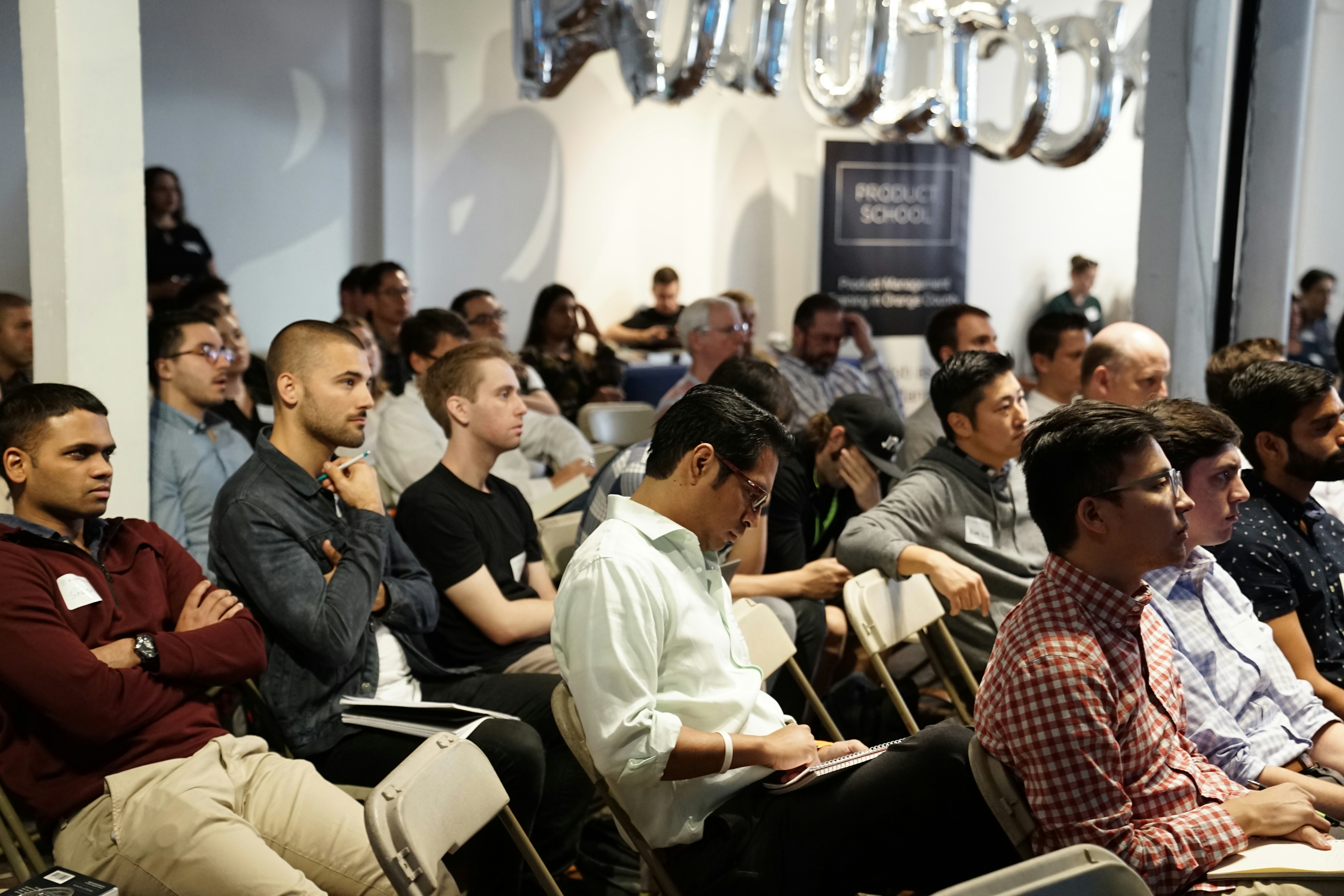
5 Personality Tests For Employees That Improve Teamwork
Teamwork can make work fun, but to get there, team members truly need to understand each other. Personality tests can bridge the gap that often exists between different personality types. People are complicated, each with their own unique ways of thinking and doing. Think of these assessments as the roadmap to navigating the diverse landscape of your team, highlighting the best paths for collaboration and identifying potential roadblocks.
We’re often asked which personality tests are best for the workplace, and we like to start with these five because of the unique insights each one provides. When combined, these layered insights create a comprehensive understanding of each individual and the dynamics that exist within a team.
The five we recommend starting with are:
16 Types
DISC
Enneagram
CliftonStrengths®
VIA
16 Types (MBTI)
The Myers-Briggs Type Indicator (MBTI) categorizes individuals into 16 distinct personality types based on preferences in four areas: Introversion/Extraversion, Sensing/Intuition, Thinking/Feeling, and Judging/Perceiving. Developed by Isabel Briggs Myers and Katharine Cook Briggs, this assessment draws from Carl Jung’s theory of psychological types. It’s invaluable for understanding how individuals consume information, learn, and reach conclusions.
Learn About The 16-Types Assessment
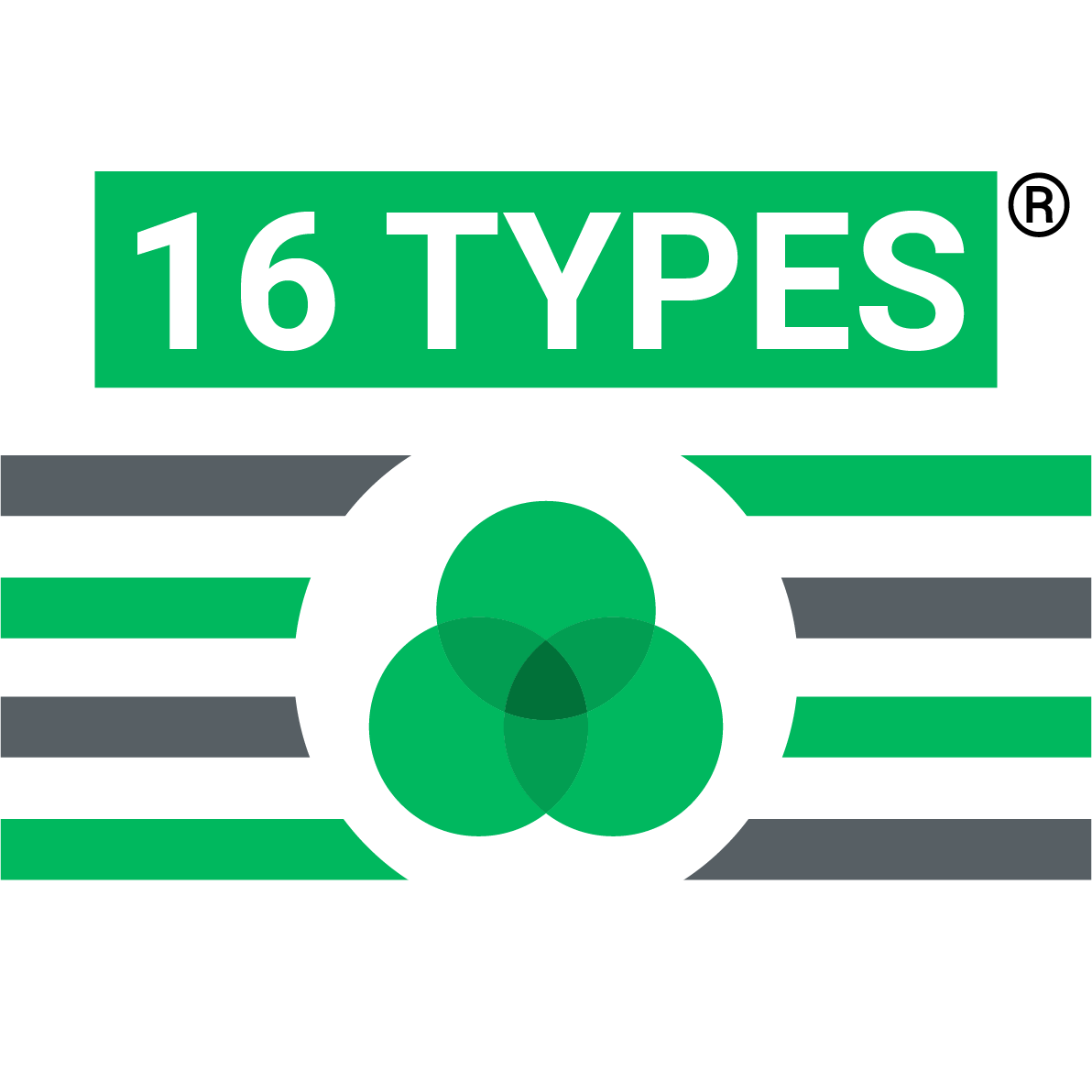
Key Benefits
The MBTI reveals how team members prefer to process information and make decisions. It highlights their mental habits and decision-making engines, offering a deeper understanding of their intrinsic motivations. By recognizing these habits, leaders can create buy-in, minimize miscommunication, and build trust within their teams.
Use Cases
Individual Growth: Helps individuals uncover their unique cognitive preferences, empowering them to understand how they best process information and make decisions. This self-awareness allows them to leverage their strengths, develop more effective strategies for personal growth, and increase their job satisfaction.
Team Dynamics: Enhances team dynamics by revealing the diverse thinking and communication styles within the group. By understanding these differences, teams can reduce friction, foster mutual respect, and collaborate more effectively, leading to a more cohesive and harmonious working environment.
Leadership Development: Enables leaders to tailor their management style to align with each team member’s natural preferences. By adapting their approach, leaders can boost engagement and productivity, creating an environment where everyone feels valued and understood. This empathetic leadership fosters a motivated and high-performing team.

Disc
DISC is a quick and easy-to-remember assessment that measures four traits: Dominance, Influence, Steadiness, and Conscientiousness. By observing your team’s communication styles and level of activity in conversations, you can better understand their needs and motivations. Adjusting your approach based on their DISC profile can improve collaboration and productivity.
Key Benefits
DISC helps teams quickly recognize how each member communicates, responds to challenges, and influences others. By observing these traits, leaders can better grasp the underlying motivations and needs of their team members.
Use Cases
Individual Growth: Provides individuals with insights into their behavioral tendencies, helping them understand how they interact with others and respond to various situations. This awareness allows them to improve their interpersonal skills and adapt their behavior to different contexts, enhancing their overall effectiveness.
Team Dynamics: Improves team communication by identifying the different behavioral styles within the group. By understanding these styles, teams can tailor their interactions to be more effective, reducing misunderstandings and strengthen collaboration.
Leadership Development: Helps leaders manage their teams more effectively by understanding each member’s behavioral style. Leaders can use this insight to tailor their communication and management strategies, ensuring they meet each individual’s needs. This leads to a more engaged and productive team, with members who feel understood and supported.
enneagram
The Enneagram is a versatile assessment that identifies nine distinct personality types, each with unique emotional drives and perspectives. It serves as a lens for understanding socio-emotional motivators, providing deep insights into why individuals behave differently when pursuing the same goals or facing the same challenges.
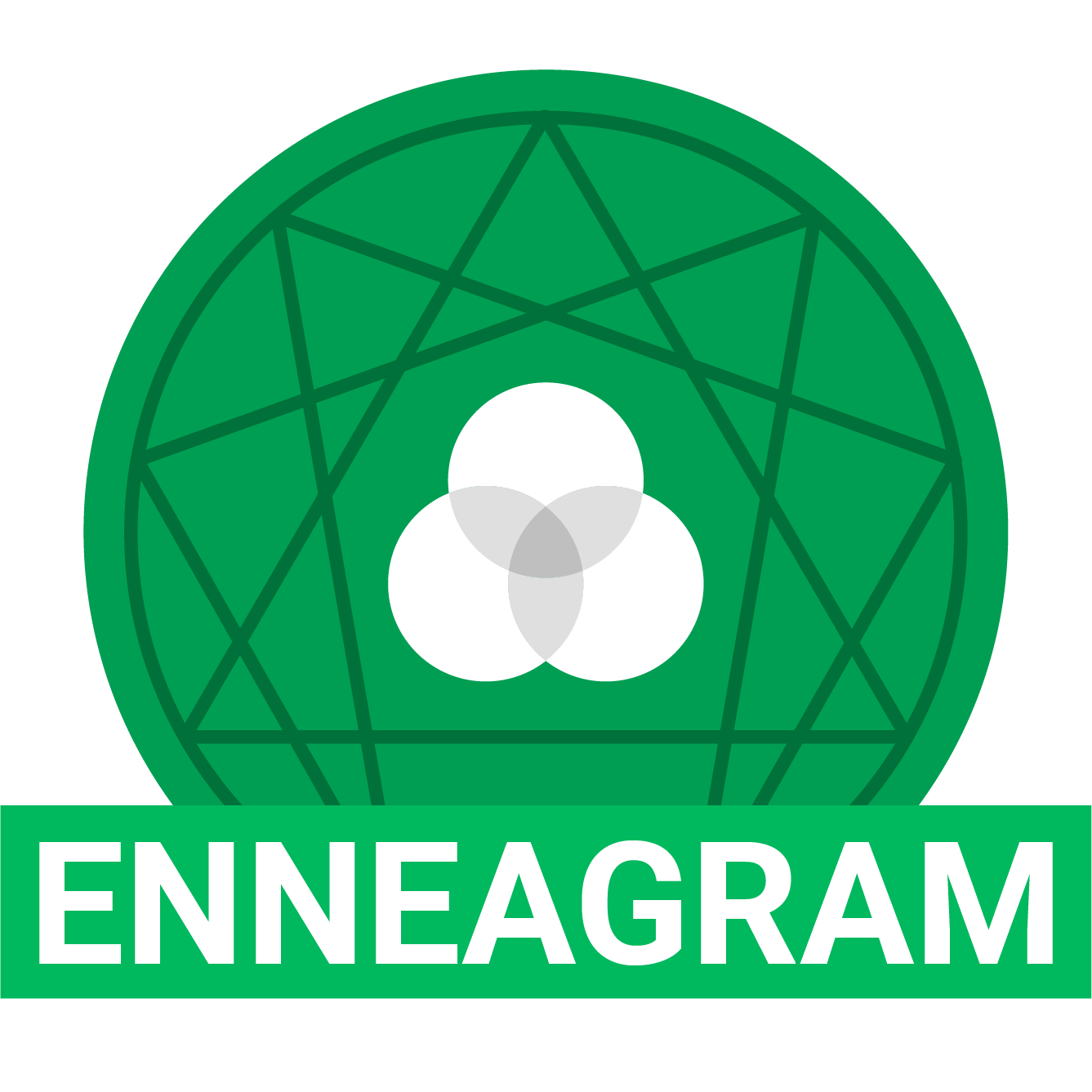
Key Benefits
The Enneagram helps teams understand the core motivations driving each member’s behavior, promoting empathy and reducing conflicts. It reveals why individuals behave differently under similar circumstances and offers valuable insights into group dynamics, decision-making environments, and conflict resolution.
Use Cases
Individual Growth: Provides deep insights into an individual’s core motivations and emotional drivers. This understanding allows individuals to recognize their strengths and areas for growth, fostering greater self-awareness and personal development. It helps them navigate their behaviors and relationships more effectively.
Team Dynamics: Enhances team dynamics by promoting empathy and understanding among team members. By recognizing the different motivations and perspectives within the team, members can better appreciate each other’s contributions and work together more harmoniously.
Leadership Development: Equips leaders with a profound understanding of their team members’ core motivations. This insight allows leaders to address conflicts and challenges with empathy and precision, creating a more harmonious and productive workplace. Leaders can tailor their approach to meet the emotional needs of their team, fostering a more engaged and committed workforce.

Cliftonstrengths®
Strengths-based assessments, such as CliftonStrengths®, Strengthscope, or VIA, help individuals tap into their innate talents and abilities. Unlike traditional personality assessments, strength-based assessments focus on what people naturally do best, helping them to understand and develop their innate abilities. By leveraging these strengths, individuals can enhance their performance, engagement, and overall satisfaction at work.
Key Benefits
CliftonStrengths® reveals individuals’ natural talents, providing a roadmap for personal and professional growth. It helps employees recognize what energizes them and how to apply their strengths to achieve their goals. Understanding these talents allows for more effective teamwork and leadership.
Use Cases
Individual Growth: Helps individuals identify and develop their innate talents, turning them into strengths. This focus on what they naturally do best can boost their confidence and engagement, leading to higher job satisfaction and personal growth.
Team Dynamics: Enhances team dynamics by helping members understand and appreciate each other’s unique strengths. By leveraging these strengths, teams can collaborate more effectively, fill gaps, and achieve better results.
Leadership Development: Empower leaders to build a strengths-based culture within their teams. By focusing on each team member’s strengths, leaders can enhance engagement and performance, creating a motivated and high-performing team. This approach helps leaders bring out the best in their team, driving success and satisfaction.
via
The VIA (Values in Action) Strengths assessment is a tool that measures an individual’s character strengths, focusing on 24 unique qualities organized under six core virtues: wisdom, courage, humanity, justice, temperance, and transcendence. By identifying these strengths, the VIA assessment helps individuals recognize and utilize their innate qualities to contribute effectively to their personal and professional lives.
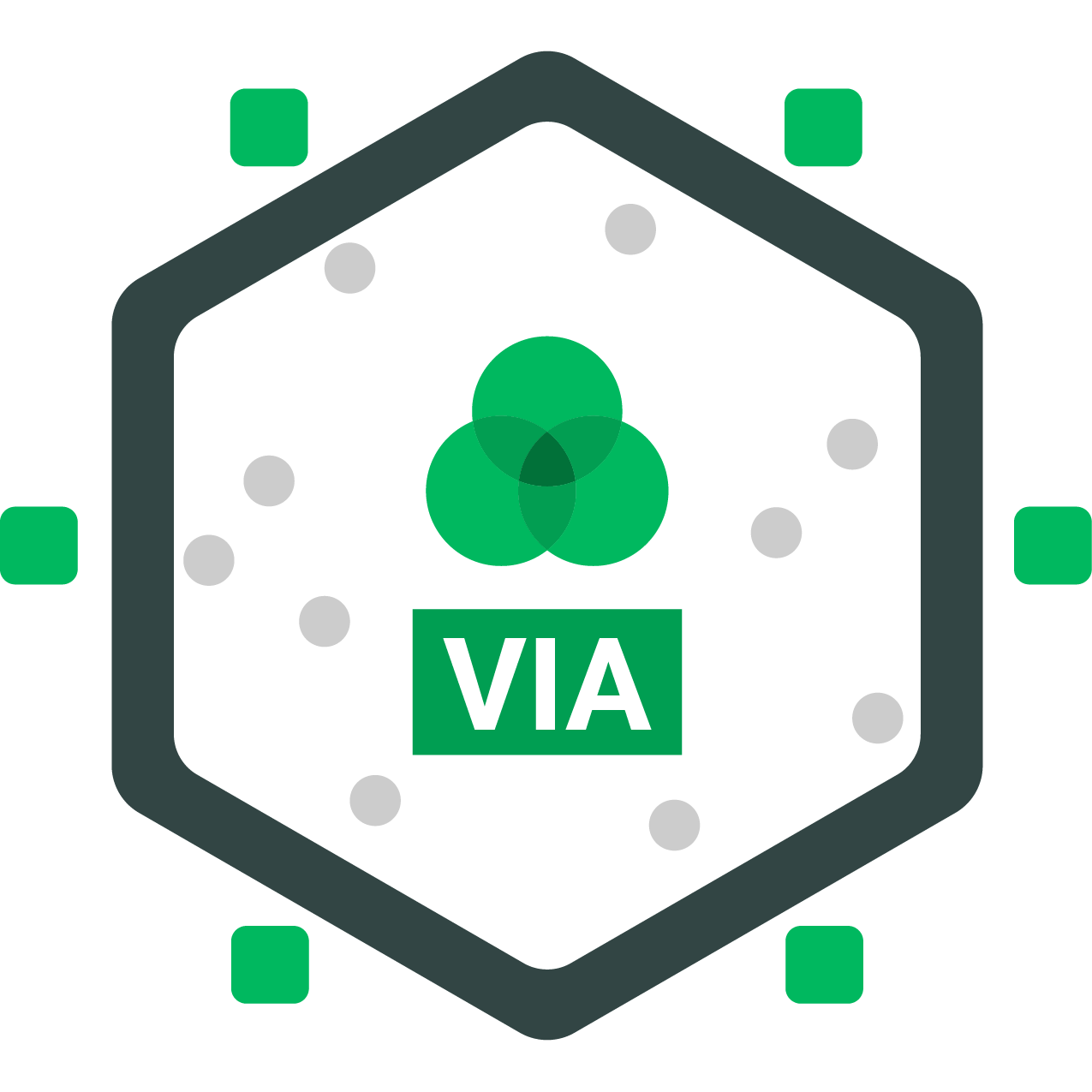
Key Benefits
The VIA assessment enhances personal fulfillment and well-being by helping individuals understand and leverage their core character strengths. This deeper self-awareness not only boosts individual confidence but also promotes a collaborative and supportive team environment where everyone’s unique qualities are valued and utilized.
Use Cases
Individual Growth: Empower individuals by providing deep insights into their core character strengths, such as wisdom, courage, and humanity. This self-awareness can increase confidence and well-being to enable employees to align their actions with their values and achieve greater personal fulfillment. By focusing on their unique strengths, individuals can navigate their career paths more effectively and find greater satisfaction in their roles.
Team Dynamics: When team members recognize and value each other’s unique character strengths, they build stronger, more supportive relationships. This positive environment encourages collaboration and mutual respect, which can improve team performance and support a cohesive working atmosphere.
Leadership Development: Providing leaders with understanding can help them create a healthy culture. By aligning team roles with individual strengths, leaders can boost morale and productivity to build a more engaged and committed team. Leaders can leverage these strengths to address challenges effectively and inspire their teams to achieve common goals.
Overview: Different Personality Assessments Reveal Different Things About Employees
Selecting personality tests for employees is a powerful way to unlock your team’s full potential and create a thriving culture. By understanding each team member’s unique strengths, motivations, and work preferences, you can inspire collaboration, minimize conflicts, and ensure that tasks are assigned in a way that maximizes performance and job satisfaction.
16 Types (MBTI) offer insight into how employees process information, learn, and make decisions. By understanding how an individual’s brain works, managers can effectively assign tasks and optimize workplace dynamics.
DISC Assessment: Focused on observable behavior, DISC identifies distinct work styles, making it invaluable for managers to understand and support their employees. It’s beneficial when time is limited and a quick evaluation is needed.
Enneagram: This assessment delves into the underlying motivations that drive an individual’s behavior. By comprehending these driving forces, managers can tap into their employees’ strengths and provide tailored support, leading to improved performance and job satisfaction.
Strengths Assessments: These identify employees’ unique talents that, when developed, result in exceptional performance. Recognizing and leveraging these strengths can help employees excel with less effort, ultimately benefiting the entire team.
Cloverleaf offers a range of assessments, including free options. We recommend starting with 16 types, DISC, Enneagram, and strengths assessments. These can provide valuable insights into team strengths and opportunities for growth. Click here to start a free trial or take a test.
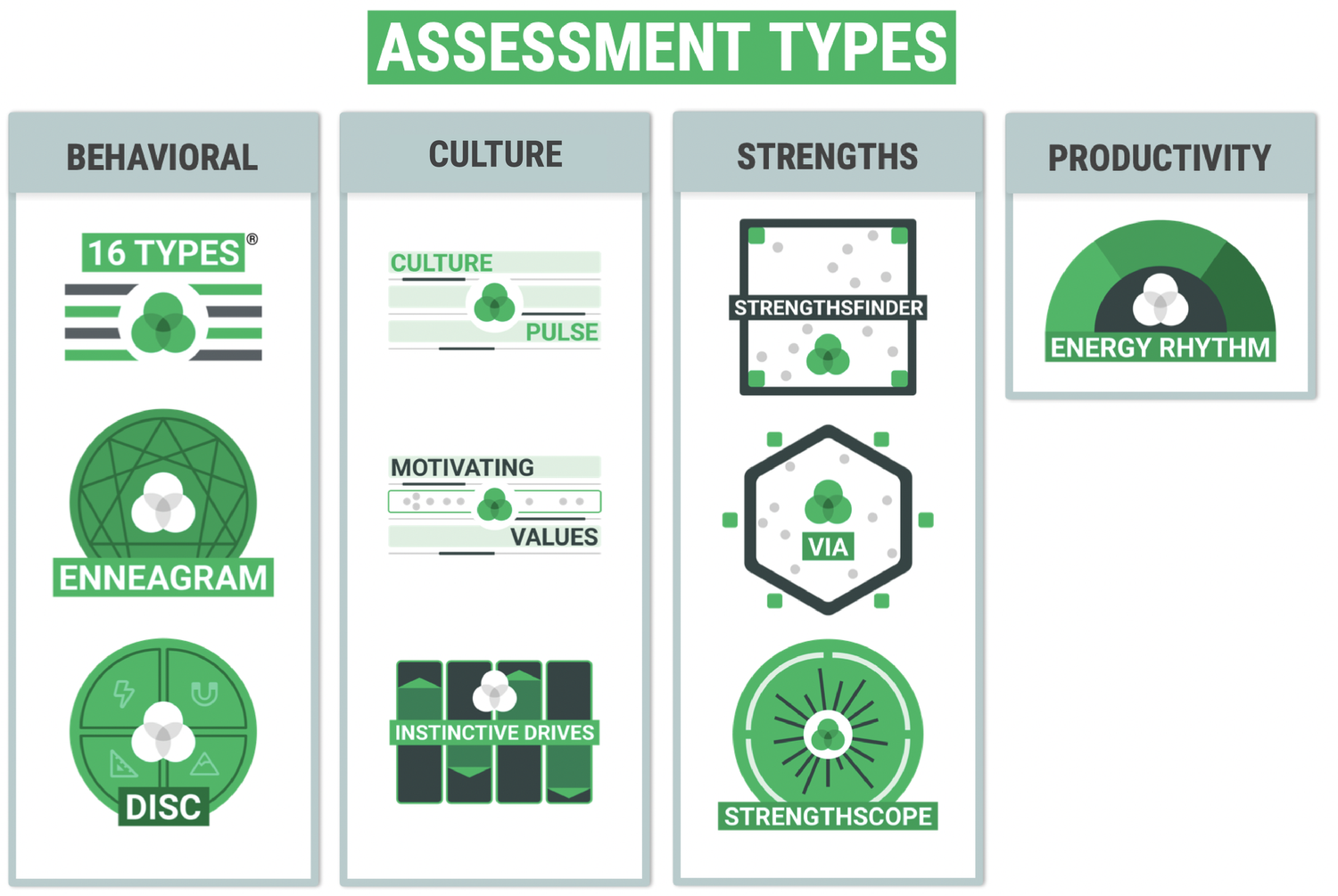
Do Want A Team That understands Each Other?
Introduce them to some of our assessments and experience automated coaching to learn something new about yourself and your team.
- Unlock your team's full potential and try Cloverleaf today.
How To Use Behavior Assessments To Coach People At Work
Using personality assessments with employees can provide invaluable insights into individual strengths, communication styles, and areas for growth. Learn how Cloverleaf integrates the insight and learning from behavioral and strengths assessments into your daily workflow to deliver personalized and actionable coaching tips in real-time.
How To Increase The Value Of Your Assessment Strategy With Automated Coaching
When deciding which personality tests to use with your team, consider the following factors to ensure you maximize their value:
-
Relevance to the workplace: Choose assessments focusing on traits directly impacting work performance and collaboration. With Cloverleaf, these insights are integrated into daily workflows, making the relevance even more apparent.
-
Validity and reliability: Opt for tests with strong scientific backing to ensure accurate and consistent results. Cloverleaf uses behavioral and strength-based assessments with reliable data that drive meaningful development.
-
Ease of use and interpretation: A good test should be easy to administer and understand. This helps individuals quickly apply the insights they gain to their everyday work interactions. Cloverleaf’s Automated Coaching™ simplifies this process, offering intuitive dashboards and personalized feedback that helps individuals quickly apply insights to their everyday work interactions.
-
Actionable insights: The best test results provide practical recommendations for improving communication, collaboration, and team performance. With Cloverleaf, these insights don’t just sit in a report—they come to life through ongoing, contextual coaching tips delivered directly within your team’s workflow tools.
Assessments
Validated behavioral and strength-based assessments you’re probably already using.

Insight search
Ask questions about yourself and teammates to get strategies specific to your context.

Coaching Tips
Effortlessly receive timely, actionable coaching nudged into your tools every day.
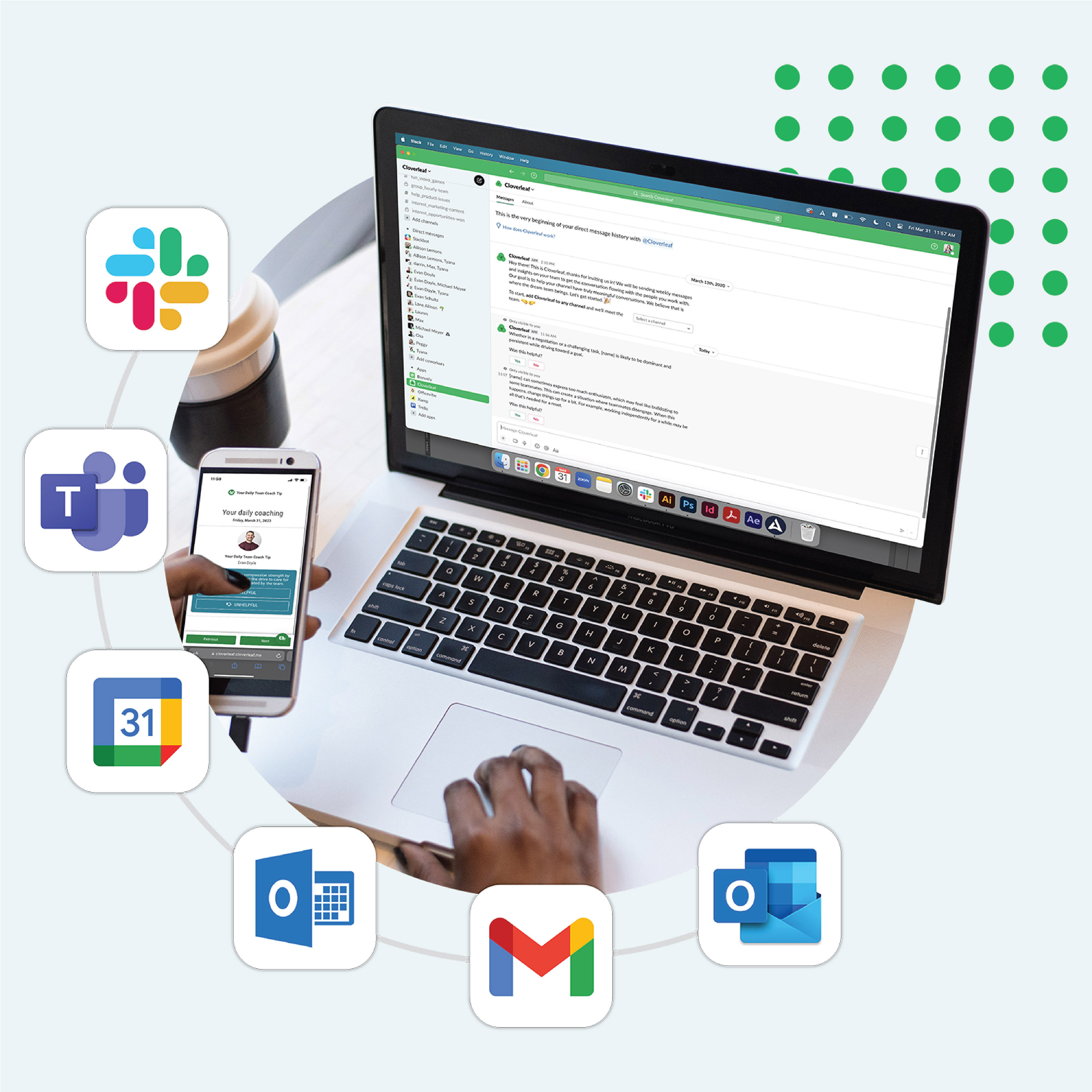
Reflections
Personalized prompts to spark introspection for application and growth.

Side-by-Side Comparisons
Reveal similarities and differences among team members to improve collaboration.

Team Dashboard
A comprehensive view of your team’s behaviors, strengths, and areas to develop.

Why Use Personality Tests Within The Workplace?
The Purpose of Personality Tests For Employees
Ideally, personality tests help organizations provide a common language, improve communication, reduce tension, reveal strengths and weaknesses, and identify growth opportunities. With Cloverleaf’s Automated Coaching™, these benefits are not just theoretical—they become a dynamic part of your team’s everyday interactions.
When employees understand their personality traits and those of their teammates, they can approach each other more effectively. This can transform potentially tense situations into constructive conversations. Cloverleaf brings these insights to life by delivering personalized coaching tips that guide employees on how to interact based on real-time contexts and the people they will interact with that day.
Assessments are tools for personal and professional development. They help individuals understand themselves, manage their behavior, and learn how to adjust their communication style according to their teammates’ preferences. Cloverleaf ensures these insights are continuously reinforced through ongoing coaching, making personal and professional growth a daily practice.
8 Benefits of Personality Assessments in the Workplace
-
Increase Communication: Personality assessments can build self and other awareness. This understanding helps people express their needs more clearly and work more effectively towards shared goals. Improved communication leads to fewer misunderstandings and smoother interactions, creating a more cohesive team environment.
-
Encourage Collaboration: Teams can more easily collaborate by understanding each team member’s unique strengths, motivations, and communication styles. When team members appreciate each other’s contributions, they can work together more effectively, leveraging diverse perspectives to achieve common goals.
-
Personal and professional development: Self-awareness gained from personality assessments can be a catalyst for personal and professional growth. Individuals can identify their strengths and areas for improvement and set goals that align with their natural talents and preferences.
-
Psychological safety: When team members feel understood and can communicate in their most natural state, they experience a higher level of psychological safety. This safe environment encourages open dialogue, innovation, and risk-taking, which are essential for a thriving workplace.
-
Strengthen Trust: Understanding each other’s personalities and motivations helps build stronger relationships and trust within the team. When team members know what drives their colleagues, they can empathize with different perspectives and build a more supportive and cohesive environment.
-
Boost Productivity: Teams can enhance productivity and performance by leveraging each person’s strengths and adapting communication styles to their needs. When individuals work in ways that align with their natural abilities, they are more efficient and effective, driving better results for the organization.
-
Employee Satisfaction: Encouraging individuals to utilize their strengths and align their work with their passions leads to higher job satisfaction and engagement. When employees feel valued for their unique contributions, they are more likely to be motivated and committed to their work, resulting in increased retention and a more positive workplace atmosphere.
-
Team Building: Understanding each person’s motivations and strengths helps create more balanced and effective teams. Managers can assign tasks that align with each member’s skills, recognizing and leveraging individual talents to optimize team performance. This ongoing process ensures that teams remain dynamic and adaptable to changing needs.
Automated Coaching™ ensures your team experiences these benefits to the fullest by turning static assessment data into dynamic, ongoing development tools. Automated Coaching™ integrates personality insights into daily workflows, providing real-time, personalized coaching tips that help individuals and teams continuously grow and adapt. By layering insights from multiple assessments, Cloverleaf offers a comprehensive view of each team member, enhancing communication, collaboration, and productivity. This continuous support ensures that the benefits of personality assessments are not just realized once but are reinforced and expanded over time, creating a more engaged, effective, and satisfied workforce.
It turns out the golden rule of “treat others how you want to be treated” can be taken a step further in the workplace. Instead, strive to “treat others how they want to be treated” to improve communication, strengthen relationships, and increase team effectiveness.
Personality Tests Help You Take The Golden Rule A Step Further
It turns out the golden rule of “treat others how you want to be treated” can be taken a step further in the workplace. Instead, strive to “treat others how they want to be treated” to improve communication, strengthen relationships, and increase team effectiveness.
Understanding your team members and the dynamics of your work environment is crucial for moving from self-awareness to successful collaboration. By recognizing that different situations may require you to adapt your natural tendencies—whether it’s being more urgent in communication, asking more questions, or carefully choosing your words when giving feedback—you can significantly enhance team collaboration.
Making these minor adjustments, where you invest extra energy to adapt to your teammates’ needs or the context of the situation, is part of personal development and self-management. The ultimate goal of providing personality tests for employees is to help them better understand themselves, their team, and their environment and manage their behaviors, expectations, and actions accordingly. This approach ensures the most positive and productive outcomes for both their team and themselves.
Recognizing your unique strengths and choosing to act differently out of kindness, generosity, collaboration, and the desire to achieve more can make you more effective and help you thrive both at work and in your personal life. Personality assessments are powerful tools that provide insight into these strengths and areas for growth, enabling you to make informed decisions and achieve desired outcomes.
Assessments are tools for understanding all your options, enabling you to make the best choices and achieve the desired outcomes. By increasing emotional intelligence, you can unlock your full potential and become a more effective leader, teammate, and individual. Cloverleaf’s Automated Coaching™ enhances these insights, transforming them from static data into dynamic, ongoing development tools. Integrated into your daily workflow, Cloverleaf’s coaching tips and personalized advice help you and your team continuously grow and adapt to become more engaged, collaborative, and high-performing.

Want To Use Personality Tests To Scale Development?
Find Out How To Quickly:
- Close the gap between learning and on-the-job application
- Personalize growth to individual strengths and needs
- Integrate learning so it is actually in the flow of work
- Develop human skills fast enough to solve business problems
- Prove the ROI of your development programs
Have you ever wondered why some colleagues seem to have a different approach to work than others? Or why do certain team members communicate differently or prioritize tasks in a particular way? Using DISC in the workplace can help teams understand one another’s behaviors and actions.
The DISC profile can help you understand yourself and your teammates because it identifies common patterns of behavior and motivation. The assessment is easy to comprehend, with only four parts: D, I, S, and C. Each letter represents a specific work style and describes the interests of each quadrant.
This post will explore using the DISC in the workplace to improve your team’s communication, collaboration, and productivity. You’ll also discover practical tips and strategies for working effectively with each type.
How Does The DISC Assessment Differ From Other Assessments?
The DISC assessment is unique in that it provides a simple, accessible way to understand and categorize behavioral tendencies, which can improve communication, teamwork, and leadership in various contexts. Other assessments may focus on different aspects of an individual’s personality or behavior, such as emotional intelligence, cognitive abilities, values, and motivating factors.
The DISC profile differs from other assessments in focusing specifically on an individual’s response to favorable and unfavorable situations. It measures their tendency toward four behavioral traits: dominance, influence, steadiness, and compliance. DISC provides insight into individual interactions and responses to stress and conflict.
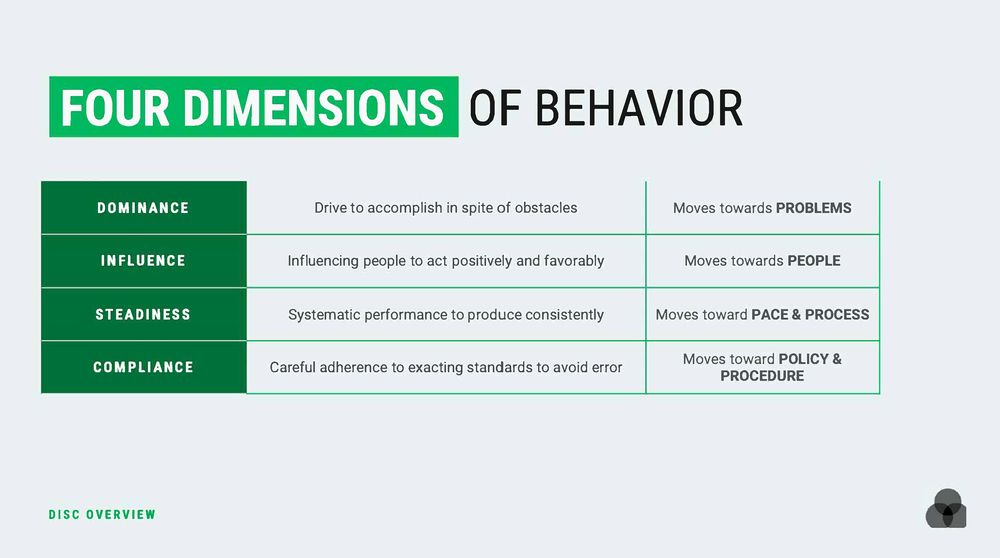
Why Is DISC Important In The Workplace?
Incorporating DISC into the workplace can improve communication, giving and receiving feedback, and conflict resolution to enhance team performance. Managers can create a more cohesive and effective team by understanding each person’s motivational tendencies, communication styles, and cognitive diversity.
Understanding Motivational Tendencies
One of the primary benefits of using DISC in the workplace is its ability to provide information about the motivational tendencies of individuals. For example, individuals with high Steadiness scores may value cooperation and sincerity, while those with higher Dominance scores may prioritize pushing towards goals and outcomes. Understanding these tendencies can help managers better motivate and engage members of the team.
Enhancing Communication
DISC scores can also provide insights into effectively communicating with others. For instance, a team with a disproportionate number of high Dominance scores may create an environment where those with higher Steadiness or Compliance scores do not feel comfortable contributing ideas. Managers can create a more inclusive and productive environment by understanding different communication styles.
Depersonalizing Conflict
DISC can also help depersonalize conflict by providing a common communication language for a team. For example, using a team dashboard to display aggregate DISC results can help team members better understand each other’s conflict management styles and triggers. This can lead to developing a “conflict contract” that establishes group norms for dealing with conflict and helps generate team buy-in.
Capitalizing on Cognitive Diversity
Studies have shown that teams with higher cognitive diversity produce better outcomes. DISC can help teams understand their level of cognitive diversity and how to harness it to improve outcomes. Using the team DISC wheel, managers can see where the team lacks certain styles or where a member may play a critical role in achieving team goals.
Defining the Right Roles
DISC can help managers better understand how team members fit into their roles. Managers can create a more productive and engaged team using DISC to match individuals with roles that align with their behavioral patterns. Assigning tasks that conflict with their natural style may lead to burnout or turnover.

HUMAN SKILL PROGRAMS KEEP HITTING The SAME LIMITATIONS...
Find Out How To Easily:
- Apply DISC results to real work tasks
- Tailor learning to who your people are, where they are
- Integrate learning so it is actually in the flow of work
- Scale human skills development
- Prove the ROI of your talent development programs
The D Type Personality In The Workplace
Dominance: Balancing Drive with Team Dynamics

The D in DISC stands for Dominance, which characterizes driven, goal-oriented, and assertive individuals. They are natural leaders who seek control and authority, viewing them as positive qualities. However, in their quest for success, D types may prioritize tasks and outcomes over the well-being and contributions of their co-workers.
High-D individuals must balance their drive for achievement with understanding how their actions affect their team dynamics. Overly focusing on tasks can dismiss the importance of building relationships and collaborating. This can ultimately hinder team success and create a hostile work environment.
Leaders with high-D traits can motivate their team towards a shared goal while creating a culture of openness, respect, and trust. By balancing their dominant nature with empathy and consideration for others, they can harness their strengths to achieve success for the team.
The I Type Personality In The Workplace
Influence: Harnessing Energy for Collaborative Success

“I” stands for Influence in the DISC model, representing individuals prioritizing social interaction and relationship-building. I types are energized by being around people and are drawn to change, seeing it as a positive force that can bring about new opportunities. They excel at connecting with others, using their charisma and personal skills to generate enthusiasm and excitement.
One potential downside of the I style is that their enthusiasm and love of variety can sometimes lead to impulsiveness and distractibility. They may lose sight of the end goal or become disorganized in pursuing new experiences. As a result, it can be helpful for Is to work with someone who can provide structure and help keep them focused on the task at hand.
Influencing types bring a valuable perspective to teams, and their ability to build relationships and generate excitement can help keep teams motivated and engaged. By understanding their strengths and potential pitfalls, Is can use their skills to benefit their team and the organization.
The S Type Personality In The Workplace
Steadiness: Fostering Team Harmony and Collaboration

These individuals are team players who prioritize a harmonious and inclusive team culture. They value stability and seek to create that for their team.
Others often consider them to be great listeners and have supportive teammates. They don’t like change or conflict and rarely initiate it, even if it costs them. It’s also essential to include them in any team decisions, give them ample notice if any changes need to be made, and seek their opinions.
S-Types like to ensure everyone is heard and foster a strong sense of connection among teammates. By understanding and leveraging the strengths of the S style, you can create a positive and supportive team environment.
The C Type Personality In The Workplace
Conscientiousness: Leveraging Attention to Detail for Team Success
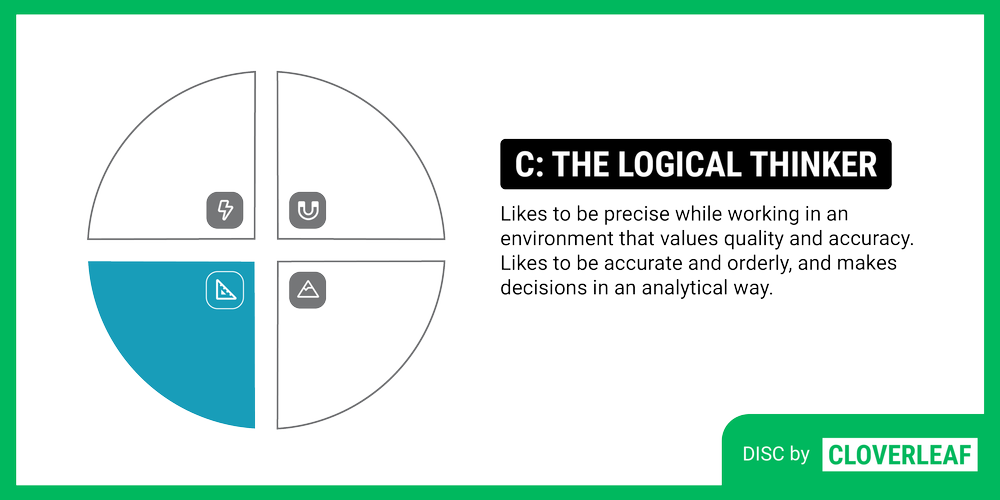
The letter C represents traits that value a high focus on details and a desire for excellence. Individuals with this personality type are motivated to deliver quality work and are experts in their area of work. They hold themselves and their team to high standards and seek feedback to ensure their work meets expectations.
While conscientious individuals bring value to a team, they can find it stressful when faced with last-minute changes or rushed schedules. It’s important to give them adequate notice and allow them to work independently. They appreciate regular feedback but must be presented with kindness, as they can be sensitive to criticism.
These individuals thrive when given tasks that require attention to detail and expertise. They don’t need much collaboration or social interaction and may prefer to work from a private office or home. You can maximize their contribution to the team’s success by recognizing and leveraging their strengths.
How To Use The DISC Assessment With Teams?
The DISC circle illustrates how individuals with different personality types respond to change differently.
Responses to Change Based on DISC Types
The top of the circle represents the Ds and Is, who are drawn to change and view it as a positive force that can help them achieve their goals. In contrast, the Ss and Cs at the bottom of the circle are change-averse and can perceive change as an opposing force that may impede their effectiveness. They fear that chaos may arise in the team due to change.
People vs. Task Orientation
The DISC model further categorizes individuals into two groups based on their preference for people or task-oriented work. Those on the I and S side are drawn to people, collaboration, and service, and those on the D and C sides are attracted to tasks, execution, and accomplishment.
Effective Communication Strategies For Each DISC Type
The way people communicate also varies based on their place in the circle. Ds prioritize clarity over diplomacy and may come across as blunt, while Is focus on building relationships and connection.
Ss prioritize harmony and use soft-spoken, affirming communication, making direct communication difficult. Cs prioritize clear communication based on data and have a black-and-white approach to good and bad.
It’s helpful to slow down and use a measured approach when speaking to Ss and Cs, especially when giving feedback or asking for information. Providing notice and time to synthesize information is crucial for Ss and Cs.
Providing advanced notice about impending changes or project deadlines can help gain buy-in from Cs and Ss. Communicating how changes will benefit the organization or team can help achieve their support.
D and I personality types respond well to direct, confident, and energetic communication. They appreciate clear goals, objectives, and deadlines. When communicating with a D, it’s essential to be clear and concise, avoiding too much detail or ambiguity.
When communicating with an I, it’s important to be enthusiastic and engaging, using stories and anecdotes to keep their attention. They appreciate a more conversational tone and love to be recognized for their contributions.
D and I personality types appreciate a sense of urgency and enthusiasm in communication, and giving them space to express their ideas and opinions is important. They also respond well to visual aids and are more likely to be motivated by positive feedback and recognition than criticism.

Using DISC To Improve Communication During Team Meetings
During meetings, it’s important to be aware of communication patterns that can reveal someone’s DISC style. The Ds and Is tend to speak up first and express their opinions, while the Ss and Cs may reserve their comments. To ensure all members contribute, set aside time for Ss and Cs to provide feedback and opinions. For example, dedicating the last 15 minutes of the meeting can be effective. Creating a cadence for participation can also encourage involvement.
When Ds and Is lead meetings, ensuring everyone’s voice is heard is essential. They may assume that others will speak up if they have an idea, but encouraging participation is important. Awareness of each DISC type can help create routines that allow for informed decisions and ensure everyone’s voice is heard.
Using Cloverleaf's DISC Personality Test To Nuance Unique Personality Characteristics In The Workplace
DISC results often include a spectrum that reflects where individuals fall on each of the four quadrants. It’s possible for individuals to strongly prefer one quadrant or be more balanced, meaning they won’t have a dominant trait.

One of the unique features of the Cloverleaf DISC test is that it reveals some conflicting values that individuals may possess. For instance, individuals with a strong I and C may experience conflicting values because they enjoy a fast-paced environment with people and frequent changes from the I. Still, from the C, they also desire consistency.
Some characteristics may present less in individuals because they are self-regulating, which is a superpower. Balancing opposing values is a unique strength, as it allows one to see both sides of an issue.
Those with strengths in opposing quadrants, like IC and DS, have complementary strengths that can benefit a team without a partner or collaborator. This ability to see both sides of the picture can drive external collaboration and build consensus while maintaining attention to detail and striving for excellence.
In contrast, a traditional influence strength may become exhausted with detailed work. Still, someone with a balanced profile can have the energy to dig into the data and make new discoveries.
The rare combination of a high S and D result is present in only 2% of Cloverleaf users. These individuals possess a strong pioneering driver while valuing connection and being highly supportive of their team. They love change, power, and authority but also desire stability and harmony with others.
While some people with this combination may focus their drive inward rather than solely on achieving goals, it’s important to note that there is still a strong desire to move forward.
Conclusion
Each quadrant in the DISC profile is driven by particular questions that they find most important.
Ds are goal-oriented and prioritize understanding where they’re going and how to get there.
Influencers prioritize collaboration, resourcefulness, and the enjoyment of the task.
Steadiness drivers want to know how they will execute a task and how it will impact the team’s well-being.
Conscientious individuals want to understand the task, including its standards, expectations, and boundaries (such as time, resources, and commitments).
By using DISC in the workplace, you can tailor your communication and approach to meet their unique needs and preferences.
Understanding DISC results and the communication styles of each quadrant can significantly improve your team’s dynamics and productivity. By knowing the questions that each quadrant is interested in, you can communicate more effectively, meet everyone’s needs, and gain their buy-in faster.
Taking the DISC assessment and inviting your team to do the same can help you leverage everyone’s talents and gifts to achieve better results. Visit cloverleaf.me to start your profile and begin your journey towards better teamwork.
Emotional intelligence in the workplace can greatly impact the success and productivity of a team. It involves understanding and managing your own emotions, being aware of other’s emotions, and adapting to new situations.
Traditional leadership models have primarily focused on technical skills rather than soft skills like emotional intelligence. Some leaders may not understand the impact of emotions on workplace performance and decision-making. At the same time, others may believe emotions are personal and have no place in the workplace.
Plus, developing emotional intelligence skills can be time-consuming and may not be seen as a priority for leaders focused on meeting short-term goals and targets. However, as awareness of the importance of emotional intelligence continues to grow, it is becoming increasingly clear that leaders who invest in developing their emotional intelligence and that of their teams can reap significant benefits for their organizations.
How Is Emotional Intelligence Being Used In The Workplace?
Emotional intelligence in the workplace is critical to mastering interpersonal skills, crucial for conflict management and effective communication. It involves understanding and regulating emotions to make thoughtful, objective decisions. With the ability to recognize others and their own emotions, employees can support a more collaborative and empathetic work environment. Assessment tools like MBTI and DISC can identify individual strengths and preferences, helping teammates to understand each other to drive success and well-being.
In this post, we will explore why emotional intelligence is so important in the workplace, provide examples of self-awareness, and share strategies for increasing emotional intelligence among teammates.
Why Is Emotional Intelligence In The Workplace So Valuable?
Individuals with high EQ tend to be better leaders, have stronger interpersonal skills, and are more effective in handling workplace stress and conflict.
For example, a study by TalentSmart found that 90% of top performers have high EQ. Another study by Hay Group found that leaders with high EQ have teams that are more engaged, more productive, and experience less turnover.
Research in the Journal of Organizational Behavior outlines that individuals with high emotional intelligence are better equipped to overcome one of the most significant obstacles in their work-life: employment gaps. These gaps can be involuntary, such as a termination, or voluntary, like taking time off to care for family. The higher an employee’s emotional intelligence, the more likely they are to navigate interruptions in their employment successfully.
It’s no surprise that high EQ is linked to increased job satisfaction, improved job performance, better relationships with coworkers and leaders, and employee retention.
And soft skills aren’t just great for creating a fulfilling and pleasant work environment. The link between profit and leaders with high emotional intelligence is clear. In one study, CEOs whose employees rated them high in character had an average return of 9.35% over a two-year period, nearly five times as much as companies with CEOs who had low character ratings.
Prioritizing emotional intelligence in the workplace can drive significant improvements to an organization’s bottom line. If high EQ among teammates can affect job satisfaction, performance, and employee retention, investing in EQ development within teams can be a wise business decision for leaders.
IF EQ In The Workplace Is So Important, Why Do Top-Level Leaders Resist Prioritizing It?
It’s not uncommon for leaders to push off emotional intelligence initiatives because they are familiar and comfortable with traditional measures of job performance. Things like technical skills and intelligence seem easier to quantify and measure.
A Wall Street Journal survey of 900 executives found that 92% said soft skills were equally important or more important than technical skills. But 89% of those surveyed said they have a “very or somewhat difficult time finding people with the requisite attributes.”
Additionally, they may not realize the impact of soft skills training in achieving long-term success. Further, the lack of an established or standardized method for measuring EQ could also lead to it being overlooked as a valuable metric for success.

For decades scholars have debated the relative importance of cognitive intelligence (IQ) versus emotional intelligence (EQ) to workplace performance. Research shows both are helpful. However, in the era of COVID-19, my bet is on emotional intelligence playing a much stronger role. –fastcompany.com
Remote work and other factors shaping the future workplace experience require stronger levels of communication and collaboration. As traditional workplace dynamics and routines have been disrupted, EQ becomes even more crucial in helping teammates navigate workload, well-being, conflicts, and fulfillment to create a place to thrive in their work.
We define emotional intelligence (EQ) as the power to identify, handle, and express emotions and to comprehend and empathize with the emotions of others. When it comes to the workplace, having a high EQ is crucial for building trust and managing conflict to be an effective team.
Self-awareness emerges from two places:
Internally: Understanding one’s desires, strengths, weaknesses, and impact on others.
Externally: Realizing how others interpret and experience you.
When it comes to internal and external self-awareness, it’s tempting to value one over the other. But leaders must actively work on both seeing themselves clearly and getting feedback to understand how others see them. The most highly self-aware people are actively focused on balancing the scale. – Harvard Business Review
Teams that exercise emotional intelligence do more with less drama. They are tuned into their internal emotional life, can manage those feelings, and transition that energy into positive team momentum.

Do You Want To Increase Emotional Intelligence In Your Workplace?
Find Out How To Quickly:
- Scale development so that it is available to each team member
- Personalize growth to individual strengths and needs
- Integrate learning so it is actually in the flow of work
- Develop human skills fast enough to solve business problems
- Prove the ROI of your development programs
What Does Self-Awareness In The Workplace Look Like?
Self-awareness is crucial to emotional intelligence, starting with understanding your emotions, behaviors, and thoughts. In the workplace, having a strong sense of self-awareness can take many shapes and forms, such as:
Acknowledging when you’re feeling overwhelmed, frustrated, or angry and taking proactive measures to manage those emotions
Being mindful of how your actions and words can impact others around you
Taking a step back and reflecting on your behavior to pinpoint areas that need improvement
Seeking feedback from your coworkers and superiors to understand yourself better.
Emotional intelligence is being able to understand your own emotions and manage them. It’s also the ability to observe others’ emotions, understand a situation, and adapt to remain productive at that moment.
By taking the time to understand your emotions, behavior, and thoughts and being proactive in managing them, teams can foster a positive productive work environment.
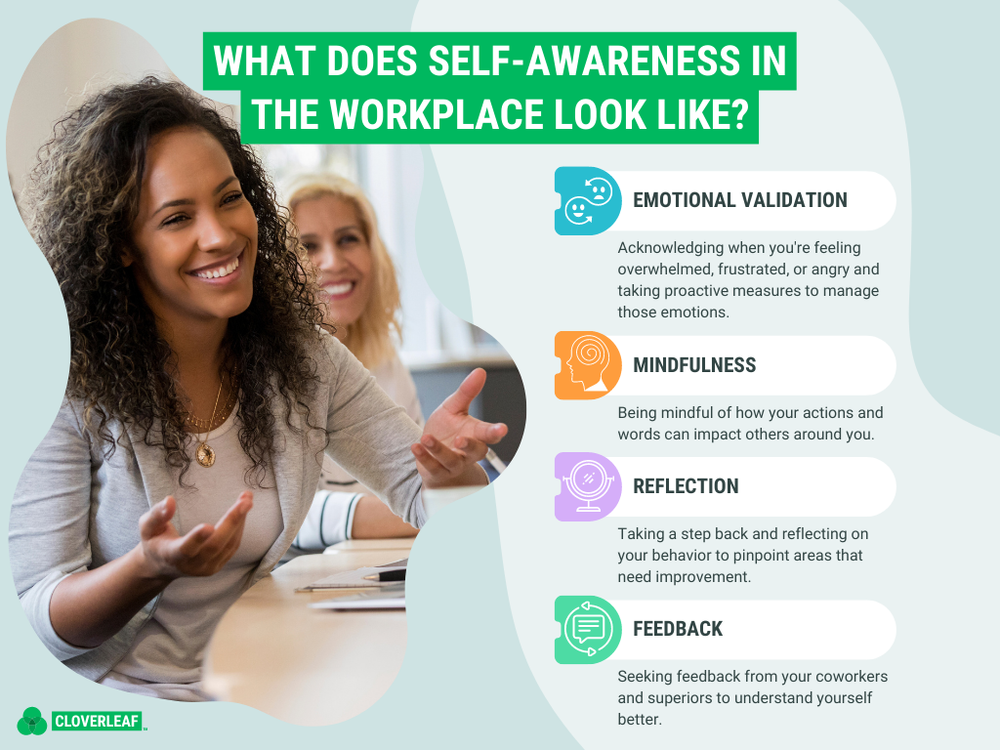
Examples Of Self-Awareness In The Workplace
Have you ever had one of those mornings where everything seems to go wrong? You arrive at work feeling overwhelmed. Every person can relate. Maybe you lost your dog, became angry in traffic, or experienced a disagreement with a family member before leaving the house. But, what if you could process those emotions and release them, allowing you to start your work day feeling recentered and in control?
Emotional intelligence can help you acknowledge and understand your emotions to prevent them from dictating your experience at work. Recentering your feelings to ensure they do not influence how you treat your teammates or drive you to make decisions because of things outside of work.
As a leader or coworker, it’s important to not only manage your own emotions but also be aware of the emotions of those around you. If you notice a colleague coming in with a negative demeanor or a bit huffy, take a moment to ask how they’re doing and if everything is okay. By simply asking questions, you can help them process their emotions and release any tension they might be feeling.
8 Questions To Help Teammates Process Their Emotions And Refocus On Work
How are you feeling right now?
Is there anything that you need to vent about or share?
Can you walk me through what has been bothering you?
What steps can we take to resolve the situation?
How can I support you at this moment?
Is there any specific task or goal you need help with?
Can you tell me more about your experience and how it has impacted you?
How do you see yourself moving forward from this situation?

By actively listening to team members verbalize their feelings, you can help them become more aware of their own emotions to help them feel more centered and able to move forward. This small act of empathy can go a long way in creating a positive work environment and improving overall workplace relationships.
How To Increase Emotional Intelligence Among Teammates
The best way to increase emotional intelligence in the workplace is to help improve self-awareness within each team member. Self-awareness enables individuals to identify areas for improvement, manage their emotions, and make more mindful decisions, which is foundational to increasing emotional intelligence.
Teams can proactively support EQ-based initiatives by implementing strategic efforts to help members feel, recognize, regulate, and communicate their emotions.
Utilize Automated Coaching™: Cloverleaf provides personalized, ongoing coaching tips to help employees develop self-awareness and powerful insight about teammates.
Celebrate Feedback And Reviews: Encourage employees to give and receive feedback in a safe by creating the structure to do so with performance management platforms.
Empower Learning and Development: Offer training programs that hone in on emotional intelligence, self-awareness, and personal growth.
Cultivate Open Communication: Work with your team leaders to establish consistent 1-on-1 meetings with direct reports to establish clear initiatives, trust, collaboration, and relationships.
Leaders play a pivotal role in shaping the culture and dynamics of the workplace. That’s why leaders must make emotional intelligence a priority. If not, the rest of the organization may not value developing their EQ or fully supporting initiatives.
And that’s where things can start to unravel. Even further, teams may lose their best talent as many seek places of employment that recognize the importance of emotional intelligence in the workplace.
Talent turnover is an expensive problem and, therefore, must be solved. Thankfully, it’s a problem that can be solved. For the most part, employees leave for reasons that are within the control of employers:
Culture
Work Environment
Growth Opportunities
Leadership Disconnect

By prioritizing emotional intelligence and creating an environment where employees feel valued and challenged, organizations can retain top talent and even attract it.
Conclusion
The next time you encounter an emotionally charged situation, consider using a simple checklist to guide your response. Ask yourself, “How am I feeling?” and “What can I do about it?”
Encourage others to share their emotions by asking, “How are you feeling today?” and “How do you want to show up for this?”
Starting a meeting with these questions can help team members process their emotions and be more present in the moment. Consider offering support by actively listening, responding, or taking action when addressing a situation. This approach can help increase emotional intelligence and create a more supportive and effective work environment.
If you’re looking for additional ways to enhance emotional intelligence in the workplace, visit the post that details an Employee Engagement Strategy For A Human-Centered Workplace.
A chronotype quiz helps you understand the biological clock that controls your body’s rhythms. Your Chronotype may be why you feel grumpy in the morning or at your best at 5 am. It may be why you feel exhausted in the evening or focused by 8 pm. This genetic, biological clock affects more than your sleep pattern. It affects when your optimal times to work, perform, eat, plan, exercise, and more.
Are you a Starter, Pacer, or Anchor? Take this quiz to find out. Discover your Chronotype today by taking the Energy Rhythm Assessment.
What Does Chronotype Mean?
Unlike a standard clock, not every person’s biological clock keeps the same time or pace. Of course, there’s a reason why people say they’re not a ‘morning person.’
Some individuals are more productive in the morning than others, while some function better in the evening. Everyone has an individual sleep schedule that affects their day-to-day performance.
Your body is programmed to wake, sleep, and function much better at certain times of the day than others. People fall into different ‘Chronotypes’ based on general awake and sleep preferences or needs. Your Chronotype reveals what rhythms are optimal for you to work positively with your body, not against it.
A chronotype quiz can help you understand your biological programming better and discover which Chronotype you relate to the most.
What Are The Three Chronotypes?
There are three primary Chronotypes – Starter, Pacer, and Anchor. These Chronotypes correspond with your unique biological clock.
In the workplace, Chronotype matters because it affects the times of day an individual will feel most alert, focus on tasks the best, and what jobs they do best during certain times of the day.
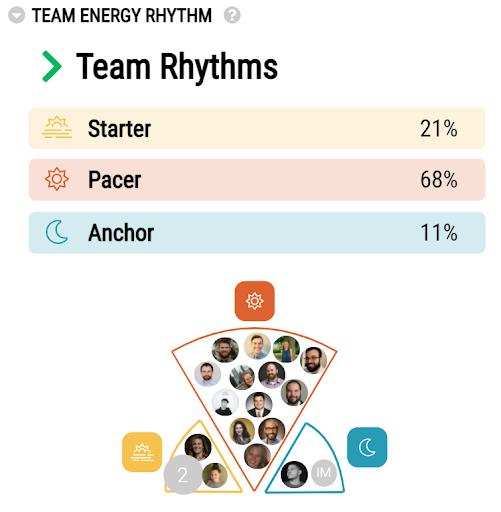

Having varied chronotypes on a team can benefit the team’s productivity and creativity if every team member knows their differences. Teams can get knowledge of their differences, use it to their advantage, and understand how they will feel through healthy collaboration.
The Cloverleaf Chronotype quiz can reveal a lot about a person concerning their energy patterns over a typical 9-5 workday, what tasks are most manageable for them to excel at during specific times of the day, and what their team’s flow may look like daily.
Using the Cloverleaf Chronotype Quiz, you can discover your Chronotype in just 90 seconds. The quiz includes questions to better understand your biological programming to reveal your Chronotype.
Cloverleaf’s Energy Rhythm Assessment draws from research about circadian rhythm and circadian typology. Circadian rhythm refers to the internal processes which regulate the sleep/wake cycle and affect people’s biological and psychological functioning in everyday life, health, and disease (Adan et al., 2012).
Your chronotype is one of three types:
- Morning type (the Starter)
- Midday type (the Pacer)
- Evening type (the Anchor)
The Starter Chronotype is about 15-25 percent of the population.
Starters are morning-type people. The Starter is an individual who enjoys an early sleep schedule and early wake time. Their peak happens in the early morning, and they experience their trough in the middle of the afternoon. This is around 12-1 pm time (lunch hours). Their recovery tends to occur in the late afternoon to early evening, around the end of their 9-5 workday.
The Pacer Chronotype is about 50 percent of the population.
Pacers are most productive during mid-morning. Pacers have a similar energy rhythm to Starters, but their peak happens in the mid-morning portion of the day. Pacers get up early and have their trough mid-afternoon, with a recovery period from late afternoon to early evening towards the end of their 9-5 workday.
The Anchor Chronotype is about 15-25 percent of the population.
Anchors are commonly known as the ‘Night Owl.’ The Anchor will often sleep in and be ready to sleep late in the evening. Their energy rhythm is similar to those that are considered Starters. Anchors experience their peak in the late afternoon to early evening at the end of a typical 9-5 day.
Anchors may have more variability during their trough than Starters or Pacers, but that trough may also be longer. Their trough happens early to mid-afternoon, with a recovery period in the morning (beginning of a typical 9-5 workday). The Anchor will often go to bed late into the night.
Pacers are the most common type among adults. And it’s important to remember that all Starters, Pacers, and Anchors experience a peak, trough, and recovery period in their day.
Understanding Your Chronotype Quiz Results
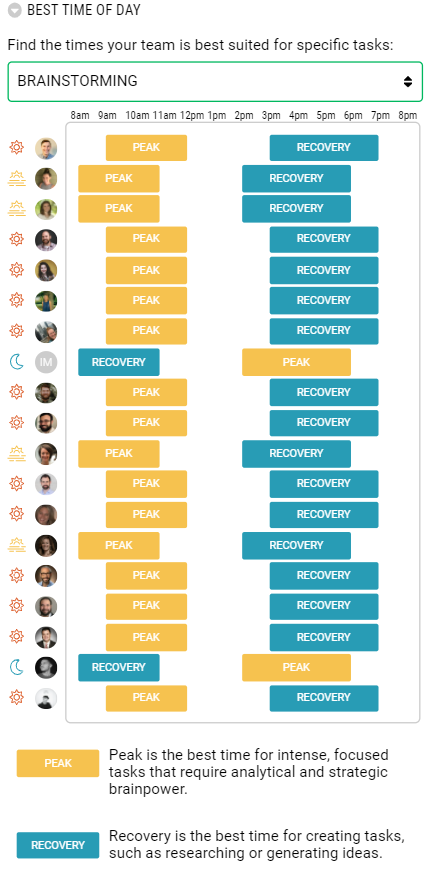
Knowing your Energy Rhythm can help you determine the amount of sleep and energy you need to excel. Learning more about your team member’s assessment results can help improve collaborative efforts.
Peak time is best for analyzing tasks, requiring lots of analytical and strategic brainpower.
A Trough is best for maintenance tasks – those low-brainpower, straightforward tasks like adding to your calendar or answering emails.
Recovery is best for Creating Tasks.
People experience a rise in energy, mood, and vigilance during their peak. People typically experience a dip in energy, mood, sleep performance, and care during their trough. During recovery, energy and mood take a sharp rise. The peak, trough, and recovery periods occur at different times for people, depending on their Chronotype.
Discover your Chronotype today with Cloverleaf. Take the Chronotype quiz to find out which Chronotype you are to start maximizing your effort and better utilizing your energy.

HUMAN SKILL PROGRAMS ARE HITTING LIMITATIONS...
5 THINGS THIS FREE RESOURCE WILL TEACH YOU
- Close the widening gap between learning and on-the-job application
- Overcome the tension of pausing productivity for development opportunities
- Integrate learning so it is actually in the flow of work
- The evolution of human skill development
- What Automated Coaching™ is and how it works.



